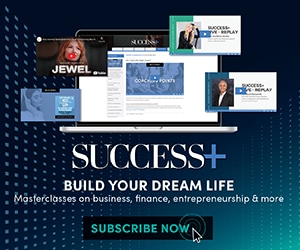Several minutes into seeing the same refresh button, over and over again, on our Facebook and Instagram feeds, we all began to learn what was happening: A social media blackout.
On Oct. 4, 2021, three of Meta’s platforms—Instagram, Facebook and WhatsApp—were down for more than five hours due to a disruption in the networking conglomerate’s infrastructure, which monitors traffic between its data centers.
Those who felt uncomfortable with the silence scrambled to sites like Twitter and Reddit to air their grievances and satisfy their itch for digital connection. In a culture that thrives on instant communication and a flurry of memes to pass the time, the outage was nearly apocalyptic.
It made me think of a lecture I’d listened to a week earlier while attending a virtual social media conference. Alex Lieberman, the co-founder of the Morning Brew e-newsletter, was detailing how his brand evolved from an idea into a global media company with 3.5 million subscribers in just six years. One point he made really stuck with me: Newsletters are one way to truly own your audience, versus only fleetingly grabbing their attention.
He hinted at the trajectory of newsletters becoming the way of the future for current and burgeoning entrepreneurs. They offer exceptional value, and you’ll want to leverage your knowledge and content so that if social media ever crumbles, your audience will still be there.
What makes newsletters so valuable?
1. They have higher activity and ROI.
Emails give social media a run for its money—literally. Even though social media is user-friendly and easy to get swept up in—in 2020, for example, the average person spent two hours and 25 minutes on social media every day—the time people spent checking their email more than doubled that, with the average person clocking 5.6 hours a day monitoring activity in both their work and personal inboxes. Plus, the return on investment is currently at $36 for every dollar you spend in email marketing.
2. They attract niche audiences.
Unlike social media, newsletters attract committed audiences that typically share the same niche interests. According to Lieberman, “There are generally two types of content that really build passionate audiences: It’s content that solves a problem or content that serves a passion.”
Google searches and certain social media posts might yield these results, but newsletters offer consistency and a single location akin to an encyclopedic hub. They’re more personal, which lowers the wall and strengthens the connection between you and your readership. And, by building a subscriber base that revolves around a specific subject, it establishes you as an industry leader.
3. They’re customizable.
It’s harder to scale a broad newsletter audience immediately because it lacks the virality that social media is known for. Earning subscribers can be an arduous process, but there’s one powerful perk: You have a greater understanding of those relationships and can cultivate your content to reflect that. “I have the control over when my audience sees my content, how they see my content, where they see my content, and I own those emails,” Lieberman says.
A little research into your audience’s current needs or interests is incredibly useful. Track what people in your niche or subscriber base are discussing. If you already have a newsletter started, pay attention to the analytics and see what type of content or subject matter receive the most clicks. That often serves as an opening to a bigger conversation.
Mailchimp, for example, recently launched a content optimizer that evaluates your email performance against industry benchmarks and provides feedback on components like images and word count. According to Deana Thornton, Mailchimp’s director of commerce marketing, this offers valuable insight into what content draws your target audience, so you can personalize it to their interests. “That is definitely critical in order for you to cut through all the noise, as we all get so many emails in our inbox on a daily basis,” she says.
4. Social Media Is Fleeting
Humans have fluid attention spans, so we don’t typically focus on something for too long before we feel an urge to check in with our environments. Case in point: It’s not unusual to see thumbs flying across screens, mindlessly scrolling through social media.
Compounded with the fact that we’re also highly visual, long captions or written content tend to have less impact when accompanied by pictures, videos or other visual aids.
That’s why segmented groups, such as Facebook groups, are increasingly recommended for brands to improve their reach. Ignite Social Media led a study that found only 5% of social media audiences will see a creator’s organic post. Algorithms play a big role in this, and unless you’re paying for exposure, your content is likely crowded out by the masses.
“You have to effectively promote your content in order to have 100% of your audience,” Lieberman says. “Deliverability is way higher [with a mailing list] than a social platform.” You’ll need to optimize your content strategy, and one of the best ways to do that is to launch a newsletter.

How to create a powerful newsletter
1. What’s the goal?
According to Lieberman, the viability of starting a newsletter depends on factors like whether you hope to quickly monetize your brand, and where your intended audience consumes content. “The first question I would always ask myself is, ‘What’s the goal of the newsletter?’” he says. Entrepreneurs need to think about where their newsletter fits in their target audience’s routine. Is what you’re offering different from what’s already out there? Evaluate yourself honestly, and if your responses check all the boxes, then you’re ready to decide whether your content solves a problem or serves a passion.
2. Create quality content.
It seems like a no-brainer, but newsletters wouldn’t have traction if the content was poor. What you’re publishing should share new and insightful information, offer something different from other mailing lists in your niche, and provide immediate value. It’s great to include information about your products, but you only want to dip your toes so far into the sales pool.
“It’s really important when you’re investing in your newsletters that you’re taking the time to tell your customers about yourself, your business, getting behind the scenes and also being very transparent about some of your challenges,” Thornton says. “It adds that human element.”
3. Don’t forget the design.
Content is the name of the game, but don’t neglect the design of your newsletter. From subject line to sign-off, the appeal and readability of your email lies in its display. Keep the layout clean and don’t inundate your subscribers with excessive text or imagery. Instead, find a balance that teases them to scroll through to the end. Newsletters are a great place to reinforce your brand colors. In the same way we think of McDonald’s when we see a golden arch, your subscribers will recognize you across channels when you’re consistent with branding.
4. Find the right subscribers…and keep them.
Even with substantive content, it can take time to build an audience. But there are a couple simple practices to move the needle forward.
Bolster your content with industry-laden SEO. Whatever your brand or business, pepper those keywords into your newsletter, social media posts and website. Wherever you have a presence, make your niche known. Once those people land on your platforms, direct them to an email sign-up page.
Run a contest or giveaway where readers can exchange their emails for a chance to win a branded prize. Morning Brew runs a referral program where subscribers earn merchandise for every converted referral. It’s a small incentive for dedicated readers that pays off as a worthwhile growth strategy.
When it comes to keeping subscribers engaged, Lieberman recommends aiming for “a balance of consistency with novelty.” Subscribers signed up for your newsletters with expectations for what lands in their inbox, so keep some elements familiar as you begin introducing fresh content.
You also don’t want to eliminate the connection between you and your audience as you grow, so opt for a temperature check from time to time. Include surveys that poll for current likes, dislikes and opportunities for improvement, but position the survey in terms of how they’ll benefit from providing their feedback.
Your subscribers are ultimately the foundation of your business or brand, and newsletters are the vehicle for keeping it intact. Says Thornton: “When you take the time to build the relationships, then it’s not just about the product or service that you provide—it’s about the business owner that’s behind it. You create more loyalty that way.”
This article originally appeared in the March/April 2022 Issue of SUCCESS magazine. Photo by MEM Studio/Stocksy United.



